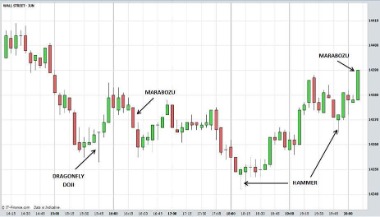So, when you find that their positions on a certain futures contract are reversing, and a reversal might be imminent on the underlying asset. This use of the COT report is similar to how you might use a sentiment indicator, such as the Current Ratio FXSSI indicator, in a forex sentiment analysis. If the commercial traders are going heavily bullish while the non-commercials are heavily bearish, the market could experience a reversal to the uptrend. And if commercials are going short while non-commercials are going long, a reversal to the downtrend may occur. The COT provides an overview of what the key market participants think and helps determine the likelihood of a trend continuing or coming to an end.
Before we dive into how to use the Commitment of Traders report as a forex trader, you have to first know WHERE to go to get the COT report and HOW to read it. By watching the behavior of these players, you’ll be able to foresee incoming changes in market sentiment. As we always say, never rely on one tool or indicator to decide your trades. As you can see, the currency pair just came from a downtrend and is making a reversal to the uptrend at about the same time. Remember, since spot forex is traded over-the-counter (OTC), transactions do not pass through a centralized exchange like the Chicago Mercantile Exchange. The Legacy and Disaggregated reports are available in both a short and long format.
Commitments of Traders (COT)
These are institutional investors, including pension funds, endowments, insurance companies, mutual funds and those portfolio/investment managers whose clients are predominantly institutional. If you started trading in the last two decades, you’ve only known a world in which the euro is worth more than the US dollar. You’d have to go all the way back to 2002 to find data points representing the EUR/USD conversion rate that start with a zero to the left of the decimal point. If you are going to make sense of what is before you on the report, here are some terms you must understand. COT reports can be obtained from the CFTC website and can be downloaded in several file formats.

The information in the report indicates how much interest there is, both long and short, in various derivatives contracts, and which type of market actor is involved. There have been recommendations to publish more detailed data on a delay as not to affect commercially sensitive positions, but that still looks unlikely. And, despite its limitations, most traders agree that even the questionable data of the COT is better than nothing.
Trading Strategy 2: Using the COT Report to predict reversals
Inflation rate refers to the rate at which the general level of prices for goods and services is rising. High inflation can erode the purchasing power of a currency, leading to a decrease in its value. We recommend that you seek independent financial advice and ensure you fully understand the risks involved before trading. Instead, use it in combination with your technical analysis tools to help you get the best out of it. With these general definitions in mind, traders can then decide how to use this information.
This category includes corporate treasuries, central banks, smaller banks, mortgage originators, credit unions and any other reportable traders not assigned to the other three categories. References to over-the-counter (“OTC”) products or swaps are made on behalf of StoneX Markets LLC (“SXM”), a member of the National Futures Association (“NFA”) and provisionally registered with the U.S. SXM’s products are designed only for individuals or firms who qualify under CFTC rules as an ‘Eligible Contract Participant’ (“ECP”) and who have been accepted as customers of SXM.
Reasons Why a Demo Forex Account is Essential for Beginner Traders
This group of traders is generally thought to be small speculators and hedgers who are not holding a position large enough to report to the CFTC. The Commodity Futures Trading Commission (CFTC) COT report offers a unique look at the positioning of futures traders across a broad range of markets, and it is quite often used as a proxy for the FX trading market. In the weekly report, the US regulator breaks down long and short positions and overall open interest according to three separate trading groups. Knowing where traders’ positions are in the forex market can be valuable information when constructing trade ideas. Reportable traders that are not placed into one of the first three categories are placed into the “other reportables” category. The traders in this category mostly are using markets to hedge business risk, whether that risk is related to foreign exchange, equities or interest rates.
THE FOREX FUNDER (TFF) ANNOUNCE AN OPPORTUNITY FOR ASPIRING TRADERS TO LAUNCH THEIR CAREERS AS FOREX FUNDED – EIN News
THE FOREX FUNDER (TFF) ANNOUNCE AN OPPORTUNITY FOR ASPIRING TRADERS TO LAUNCH THEIR CAREERS AS FOREX FUNDED.
Posted: Tue, 05 Sep 2023 07:24:00 GMT [source]
The Commodity Futures Trading Commission (Commission or CFTC) publishes the Commitments of Traders (COT) reports to help the public understand market dynamics. The CFTC releases the weekly COT reports in static format to support the historical usage patterns of industry professionals viewing and accessing each week’s data. Each historical report is viewable with the data for the respective reporting week, along with all historical data compressed within an annual file. Information that is included in the report is compiled on Tuesday and verified on Wednesday before being released every Friday. The report is intended to help people understand the dynamics of the market.
Commitments of Traders (COT) Charts
StoneX Financial Inc. (“SFI”) is a member of FINRA/NFA/SIPC and registered with the MSRB. Securities and Exchange Commission (“SEC”) as a Broker-Dealer and with the CFTC as a Futures Commission Merchant and Commodity Trading Adviser. References to securities trading are made on behalf of the BD Division of SFI and are intended only for an audience of institutional clients as defined by FINRA Rule 4512(c). References to exchange-traded futures and options are made on behalf of the FCM Division of SFI.

When this type of shift from major funds is observed, traders can look for other signs that show the prior trend is losing steam which could indicate a possible exit of open positions. Further validated by the technical indicators used in the chart – RSI and 100-day moving average which both signal a bearish bias. For example, traders are classified as non-commercial or commercial, and that holds for every position they have within that particular commodity. This means that an oil company with a small hedge and a much larger speculative trade on crude will have both positions show up in the commercial category. Simply put, even the disaggregated data is too aggregated to be said to accurately represent the market.
The aggregate of all long open interest is equal to the aggregate of all short open interest. The long and short open interest shown as “Nonreportable Positions” is derived by subtracting total long and short “Reportable Positions” from the total open interest. Accordingly, for “Nonreportable Positions,” the number of traders involved and the commercial/non-commercial classification of each trader are unknown. Open interest is the total of all futures and/or option contracts entered into and not yet offset by a transaction, by delivery, by exercise, etc. On the other hand, political instability, elections, or geopolitical tensions can create uncertainty and negatively impact a currency’s value.
- Typically, these are dealers and intermediaries that earn commissions on selling financial products, capturing bid/offer spreads and otherwise accommodating clients.
- Adam received his master’s in economics from The New School for Social Research and his Ph.D. from the University of Wisconsin-Madison in sociology.
- The information in the report indicates how much interest there is, both long and short, in various derivatives contracts, and which type of market actor is involved.
- As one would expect, the largest positions are held by commercial traders that actually provide a commodity or instrument to the market or have bought a contract to take delivery of it.
Another theory is that commercial traders understand their market the best and taking their position has a better chance of profit (which is pretty much the same thing as the “small speculators” being wrong). The disaggregated COT report is another one that is commonly known by traders. It provides a deeper breakdown of the market participants, splitting commitment of traders forex commercial traders into producers, merchants, processors, users, and swap dealers. The noncommercial participants are split between managed money and other reportables. The supplemental report is the one that outlines 13 specific agricultural commodity contracts. This report shows a breakdown of open interest positions in three different categories.
Looking at the COT example in the table above, we can see that Nasdaq 100 futures, traded on the Chicago Mercantile Exchange (CME) had an open interest of 57,779 contracts on June 15, 2021. Of these, 14,320 were longs held by dealers and 10,875 shorts https://g-markets.net/ sold by institutional traders. The long version of a COT report, in addition to the information in the short report, groups the data by crop year, where appropriate, and shows the concentration of positions held by the largest four and eight traders.